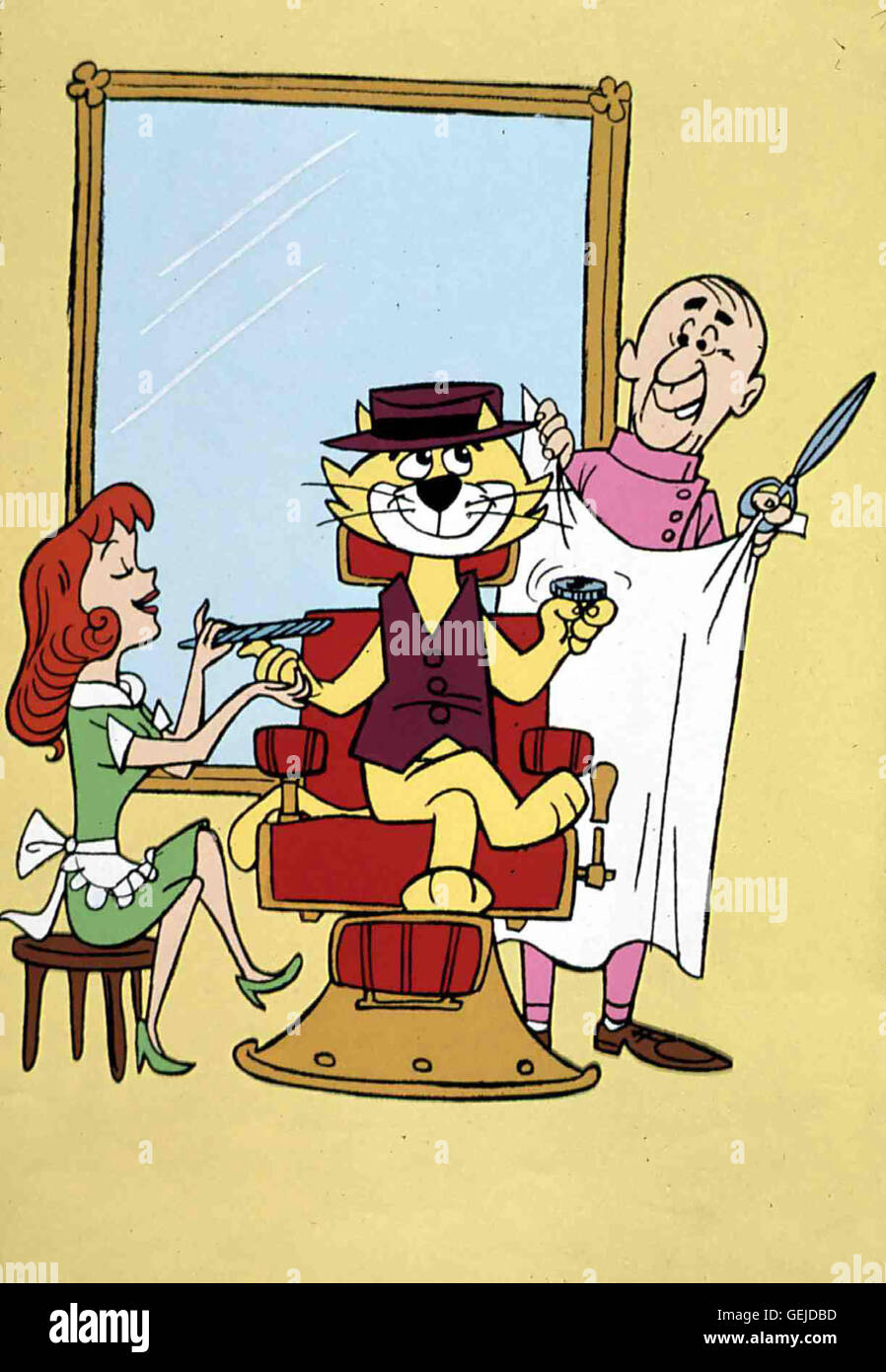

In the current DVD versions, however, only Platt gets writing credit due to a production error: the closing credits from Platt's episode were used for every episode, so Platt gets screen credit regardless of who wrote the actual scripts. Top Cat was conceived along the lines of a traditional, live-action situation comedy, and Hanna-Barbera recruited top sitcom writers of the day to furnish scripts, including Barry Blitzer (a Bilko veteran), Harvey Bullock, and Kin Platt.

Ĭo-creator Bill Hanna claimed it was one of the wittiest and most sophisticated shows he produced with a rare appeal to audiences of all ages. This enforcement of the social order by police ensures that the cats will not escape their current living conditions. The gang faces a human police officer who frustrates their efforts and keeps them trapped in the alley. Top Cat's get-rich-quick schemes are efforts to escape to a better life. The cats may represent disenfranchised people confined to living in a poor environment.
#TOPCAT PICTURES SERIES#
Lehman says that the series can be seen as social commentary. The last time the "Boss Cat" title was used was in a 1989 rerun on BBC One, marking the end of BBC One's long-run of the program, and by the time the show was aired again in April 1999 on BBC Two (which once carried the program for a short time during August 1983 and again in December 1988), the aforementioned Top Cat food brand had been long since discontinued, allowing the show's original American title cards to be used on British broadcasts without issue.Īnimation historian Christopher P. It was only the opening and ending footage that was altered: shots in which the Top Cat logo was used were cut (causing a noticeable jump in the footage in both instances) with a title card bearing the "Boss Cat" title added before the beginning of the actual episode. The name change was purely cosmetic, as the soundtrack and dialogue still continued to refer to the titular character by his original name. The name change came about because "Top Cat" was also the name of a then-popular British brand of cat food, and the BBC, on which the show aired, does not carry advertising. On 13 June of that same year, however, the show was hastily renamed "The Boss Cat" (which was later shortened to just Boss Cat in 1967). Top Cat made its United Kingdom debut on the BBC (later renamed BBC One) on. In Canada, Top Cat premiered on the CTV Television Network on Octoand in Australia, the show premiered on the National Television Network (now known as the Nine Network) on October 5, 1962, and ran on the Nine Network until 1971. The show aired on Saturdays in 19 on ABC, and was then rerun in various Saturday morning slots on NBC from 1965 to 1969, and occasionally in the 1980s. The show was broadcast in black and white but was created in colour. Hanna-Barbera created 30 half hour episodes of Top Cat. Top Cat aired on Wednesday nights in Prime Time from 8:30 - 9:00 PM. 9.3 Top Cat's appearances in comic strips.9.2 Top Cat's appearance in other shows.9.1 Other characters appearing in Top Cat.The show also became very popular in Latin American countries (especially Mexico) and the United Kingdom. The show was a ratings failure in prime time, but became successful upon its time on Saturday morning television. It aired in a weekly evening time slot from September 27, 1961, to April 18, 1962, for a single season of 30 episodes.

Top Cat is an American animated sitcom produced by Hanna-Barbera Productions and originally broadcast in prime time on the ABC network. Left to right: Benny the Ball (foreground) Brain Officer Dibble (Behind fence) Fancy-Fancy Top Cat Spook (foreground) Choo-ChooĬolor (initially telecast in black and white)


 0 kommentar(er)
0 kommentar(er)
